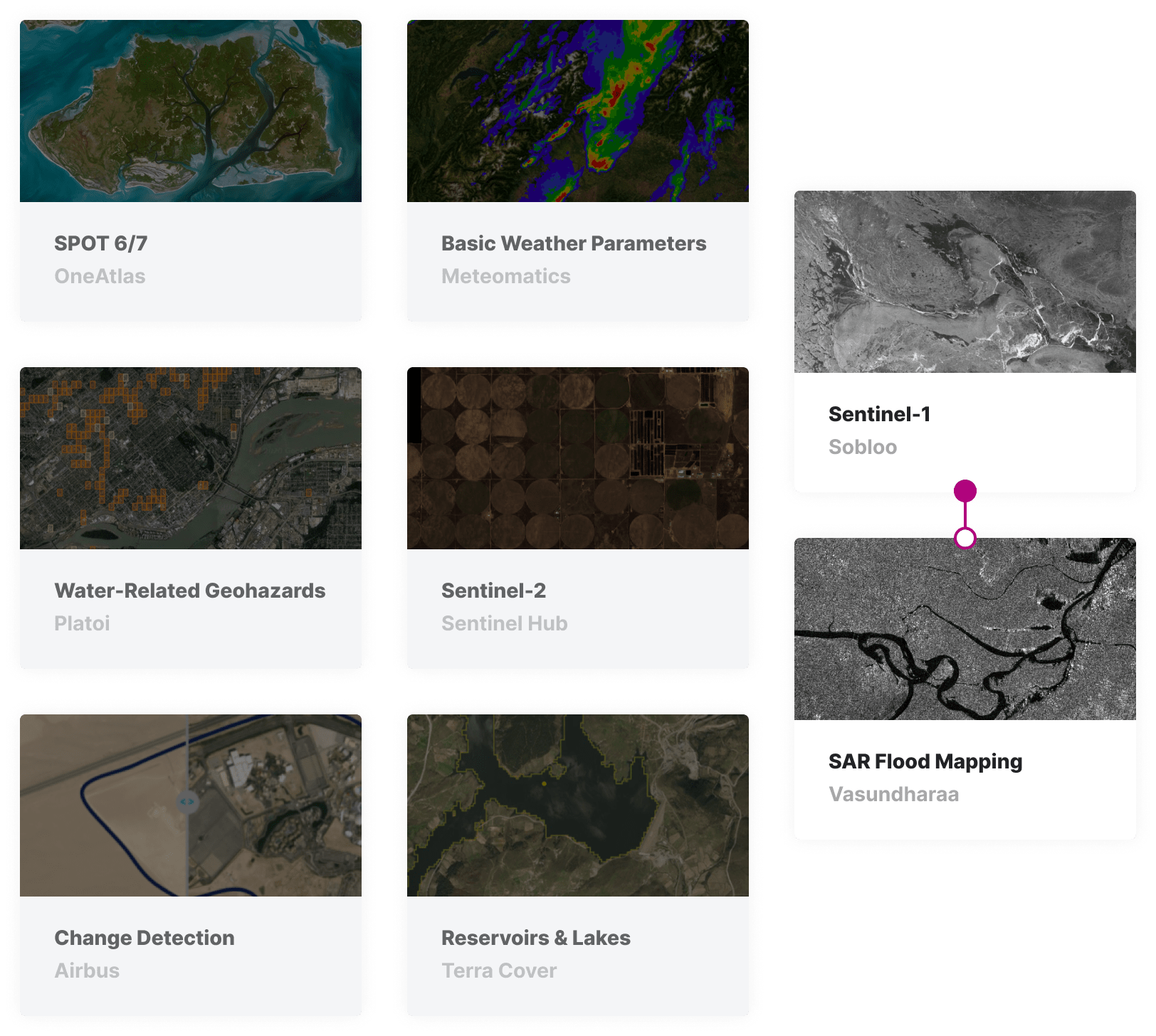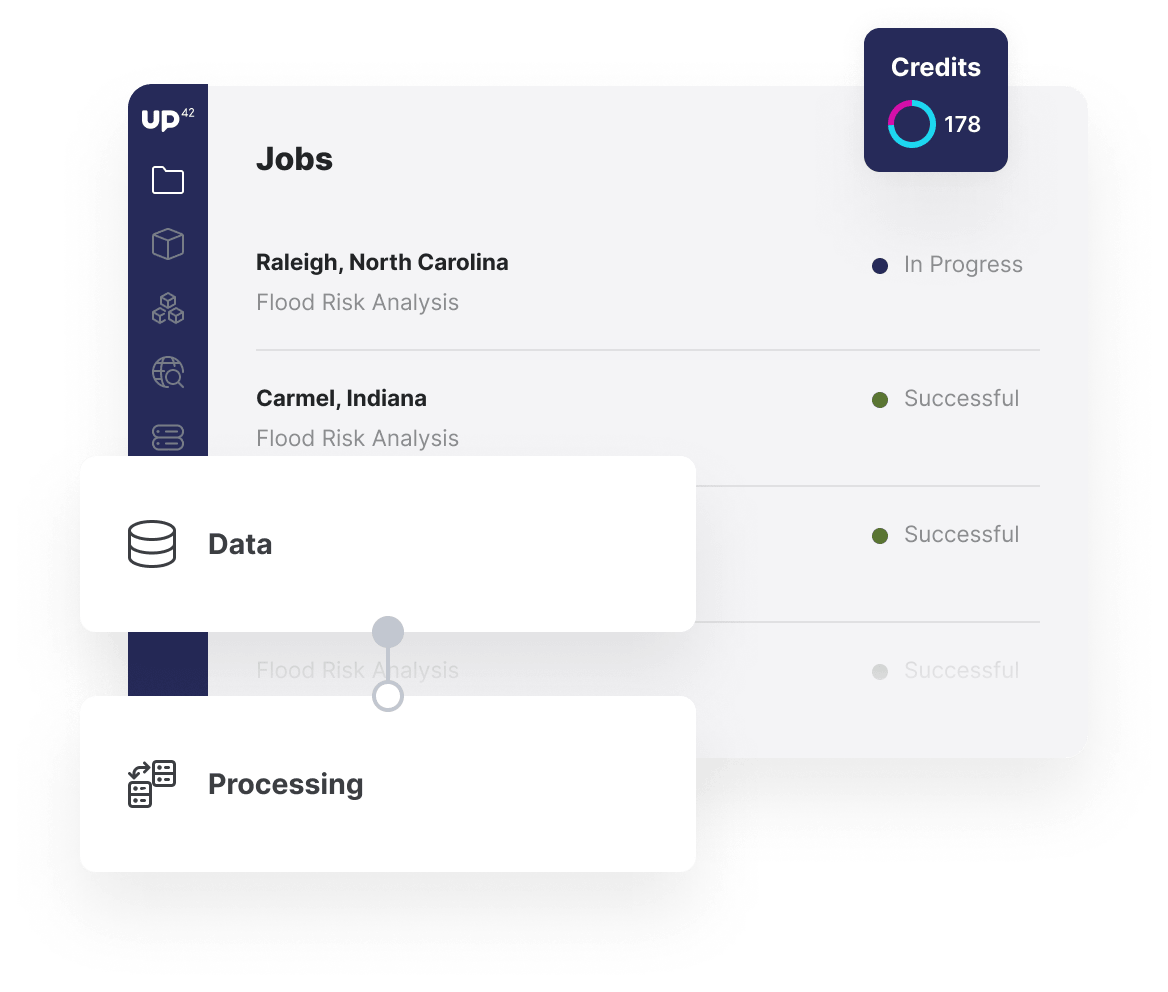High-resolution optical and radar imagery
Access high-resolution Sentinel-2 optical and Sentinel-1 radar imagery for vast areas of interest. Augment analysis with 1000 historical and forecasted weather parameters.
Respond to floods effectively
Map floods using Sentinel-1 radar imagery to analyze the area affected by flooding to target support to the right areas.
Predict water-related geohazards
Use out-of-the-box machine-learning algorithms processing Sentinel-2 data to predict flooding or exposure to water bodies for your areas of interest.





